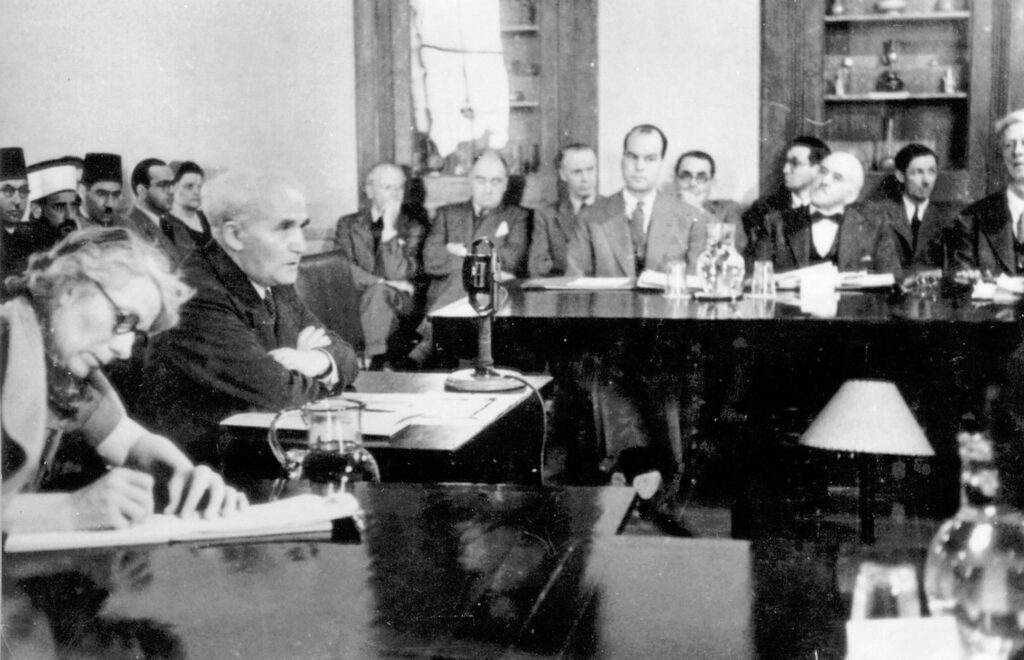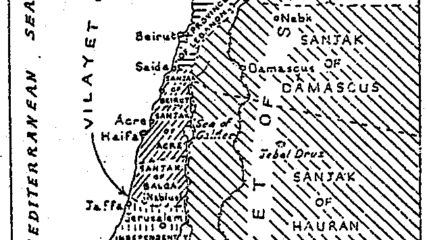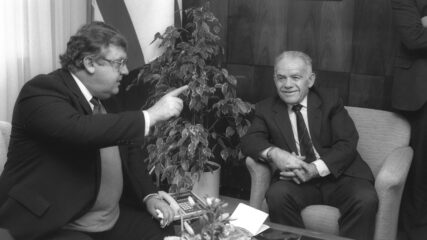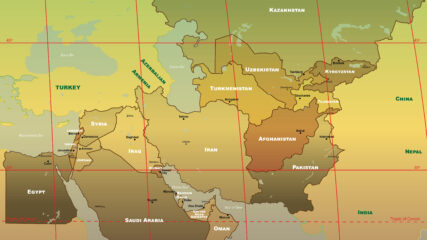April 20, 1946
Anglo-American Committee of Inquiry, Report to the United States Government and His Majesty’s Government in the United Kingdom, meeting in Lausanne, Switzerland, 1946.
Unsure how to manage Palestine’s future, the British and American governments collaborated in forming the Anglo-American Committee of Inquiry. The objective was to find some middle ground between the status of European Jewish refugees and the growing tensions between Jews and Arabs in Palestine. There was Great Power discord on how to reconcile these tensions. It is unclear why the committee thought it should reconcile the matter of European Jewish displaced persons with Palestine’s Arab-Jewish conflict. American President Harry Truman wanted to assist Jewish refugees in Europe, and the British government, particularly Foreign Secretary Ernest Bevin, was unalterably opposed to allowing more Jews to immigrate to Palestine. Bevin opposed the Jewish national home idea and was terribly afraid of major Arab and Muslim reprisals against the British presence in the Middle East if he caved to American overtures for Jewish immigration to Palestine. Singularly important for the future of the Palestinian National Movement, its leaders refused to give testimony to the inquiry committee or to join any debate or discussion by the two powers about Palestine’s future. The boycott by Palestinian Arab leaders “marked the completion of the expropriation of the Palestinian Arab case from the Palestinians themselves” (Amicam Nachmani, Great Power Discord in Palestine — The Anglo-American Committee of Inquiry Into the Problems of European Jewry and Palestine 1945-1946, Cass, 1987, p. 261).
The committee’s report suggested that Jewish immigration to Palestine should be increased, specifically that 100,000 Jewish refugees be allowed to go there. The report recognized deep Arab state anger at additional Jewish immigration. The report suggested a political resolution to the conflict in Palestine that would include self-governing, independent political entities for the Jews and the Arabs. The committee suggested further exploration of a binational state but hinted, while not saying so specifically, that partition might the solution.
The British did not allow an additional 100,000 Jews to immigrate to Palestine; appeasing Arabs was more important for London. The committee’s hint of geographic political partition did give voice to this idea when the U.N. Special Committee on Palestine met in August 1947 to debate the merit of two states. The United Nations General Assembly ultimately endorsed a plan for two states with an economic union in Resolution 181 in November 1947.
The committee made several other frank assessments about the status quo in Palestine. The report noted that Arab national feeling among the Palestinians was less developed than Jewish national feeling there, and the report criticized Arab leadership in Palestine, noting “that the Arabs are divided politically by the personal bickering of the leaders, which still center round the differences of the Husseinis and their rivals; and socially by the gap which separates the small upper class from the mass of the peasants — a gap which the new intelligentsia is not yet strong enough to bridge. Consequently they have developed no such internal democracy as have the Jews. That their divisions have not been overcome and a formally organized community developed is in part the result of a less acutely self-conscious nationalism than is found today among the Jews. It is, however, also the outcome of a failure of political responsibility. The Arab leaders, rejecting what they regard as a subordinate status in the Palestinian State, and viewing themselves as the proper heirs of the Mandatory Administration, have refused to develop a self-governing Arab community parallel to that of the Jews. Nor, so far, have they been prepared to see their position called in question by such democratic forms as elections for the Arab Higher Committee, or the formation of popularly based political parties.”
— Ken Stein, March 28, 2025
Read the Full Report in a Printable PDF








